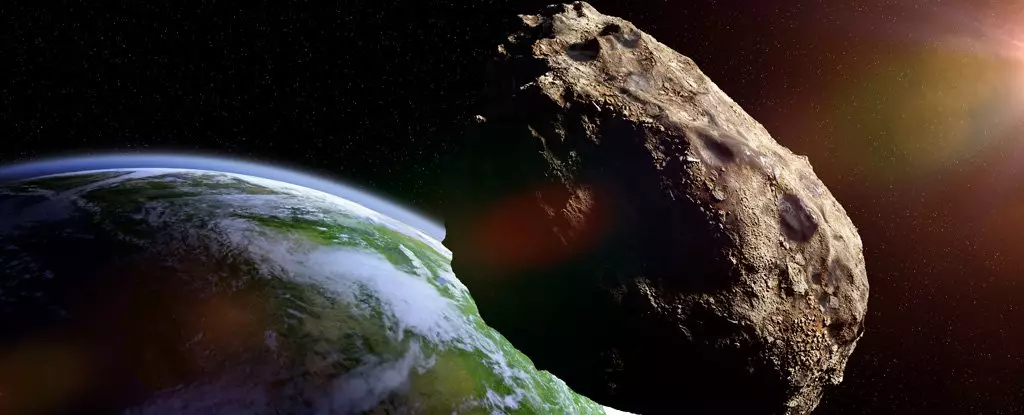Asteroid 2024 YR4 is garnering attention this season as a significant space rock that is currently headed toward Earth. The International Asteroid Warning Network (IAWN) has reported a concerning probability of about 1 in 83 for a potential impact within the next eight years, with December 22, 2032, earmarked as a critical date. With this high probability, the asteroid has quickly ascended to an alarming subject of conversation among astronomers, planetary defense advocates, and global government officials. David Rankin of the Catalina Sky Survey expresses on Bluesky the pressing nature of this observation, stating that “most likely outcome is still a near miss.” Yet, the very existence of any impact potential, however minimal, is sufficient to initiate precautionary measures as a defensive response.
The Importance of Monitoring and Collaboration
Given the stakes involved, the IAWN is undertaking a concerted effort to track and monitor the asteroid. Coordination among international space agencies, including the European Space Agency and NASA’s Center for Near-Earth Object Studies, highlights the universal understanding that asteroid threats are not confined by borders. As astronomer Colin Snodgrass from the University of Edinburgh indicates, the first line of defense is to enhance observational capabilities. In essence, this gathering of international minds fosters a sense of global solidarity in the face of a potentially catastrophic event.
It is noteworthy that the early stages of tracking such celestial bodies are often marked by uncertainty. Researchers currently have limited data to calculate the trajectory of 2024 YR4, which complicates evaluations of its path. This necessitates the continual reevaluation of the asteroid’s position through various observational techniques, along with ongoing discussions regarding possible mitigation.
Initial observations suggest that asteroid 2024 YR4 measures between 40 to 100 meters in diameter. While this size may not be enough to trigger global disruption akin to larger celestial bodies, its scale is significant enough to cause localized catastrophes, potentially inflicting damage up to 50 kilometers around the impact site. The nebulous nature of the asteroid’s trajectory complicates predictions regarding where on Earth it might land, should an impact occur. Areas identified by IAWN as potential impact zones include regions in the eastern Pacific, northern South America, Africa, and South Asia.
Though the chance of impact remains just above 1 percent, the asteroid’s rating of 3 on the Torino Scale has captured attention. This scale is designed to communicate the threat posed by near-Earth objects to the public and has allowed the IAWN to prioritize observances. The historical context of this scale reveals that very few asteroids have commanded such attention. For instance, asteroid 99942 Apophis once rated a 4 but has since had its threat downgraded after further monitoring.
An essential aspect of tracking asteroids like 2024 YR4 is their orbital dynamics. The early period of observation typically showcases an exaggerated risk due to the sheer uncertainty of the asteroid’s path, which creates a wider risk corridor that overlaps with Earth. As additional data become available and the asteroid’s trajectory is better established, this corridor narrows, which often reveals a less threatening path than initially anticipated. The challenge, in this case, lies in the asteroid’s elongated orbit, which currently places it on a trajectory moving away from Earth. This orientation significantly complicates accurate predictions regarding its eventual path.
In light of this complexity, the Space Mission Planning Advisory Group will convene soon in Vienna, where they’ll assess the ongoing risk posed by asteroid 2024 YR4. Should the risk assessment remain significant, it could spur discussions on potential intervention measures, such as utilizing spacecraft to divert or destroy the asteroid, drawing on technological advances validated by missions like NASA’s Dart.
Ultimately, while the prospect of asteroid 2024 YR4 making direct contact with Earth remains uncertain and likely minimal, the necessity for preparedness and public awareness cannot be overstated. Systems for astrophysical observation and planetary defense are improving and evolving, and coordination among international bodies is essential for effective response strategies. Public interest in space and near-Earth objects must sustain its momentum, as conscious awareness catalyzes support for further research and technological innovation aimed at protecting our planet from potential threats from above.
The looming presence of asteroid 2024 YR4 acts as a catalyst for re-examining the robust protocols in place to handle extraterrestrial threats. The willingness and readiness to confront such a challenge reflect a broader commitment to global safety and inter-agency collaboration, crucial to safeguarding the future against celestial unpredictability.

